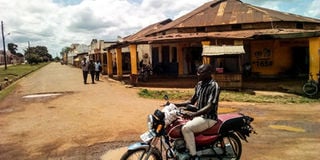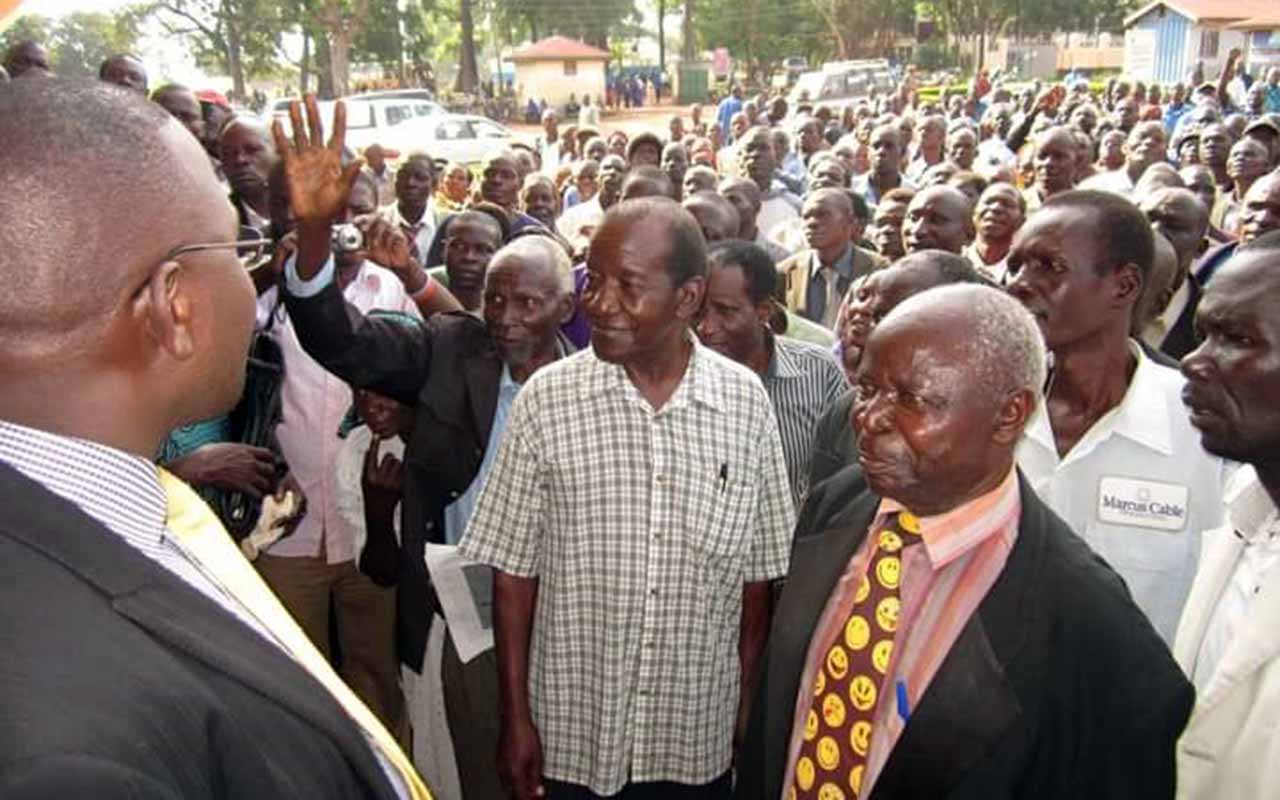Kaberamaido: Sleepy old town killing trade

Old. Some of the old buildings in Kaberamaido Town. The structures have discouraged potential businessmen. PHOTO BY GEORGE MURON
What you need to know:
- The town council mayor, Mr David Einyu, says the impediment to development is not only the presence of old structures but the death of reliable power.
- But Mr Ayama says besides having many of its residents derive a living from farming, Kaberamaido is isolated from the main highway and neighbours Lake Kyoga, a reason for its delayed development.
In a fairly flat terrain, one is greeted by loose, rusty and sagging buildings in a typically busy but unplanned Kaberamaido Town.
This is the look residents are accustomed to since Kaberamaido was granted district status in 2001, having been carved from its, Soroti District.
Mr James Esomu, 79, a retired primary school teacher and a senior resident, says there is little or no fanfare to celebrate in terms of infrastructural growth in the area.
Worse still, there are no emerging buildings to prove any development.
“We are one year shy of 20 years as Kaberamaido District but change in terms of infrastructural development still remains elusive,” Mr Esomu says.
“I wonder if there is any marketability to attract interested developers to this town or affirmative action by the town council authorities to deal away with these structures,” he adds.
Clutching his grey beard chin, the retired primary school teacher, says, the sagging structures discourage business.
“You hardly find hardware business or wholesale traders here because the buildings are not habitable. Sadly, the people who bought these structures from the Indians are unable to erect new ones.”
Kaberamaido Town Council has almost 150 dilapidated structures built between 1920 and 1940 by Indian cotton traders.
Mr Esomu says Otuboi Town Council, which was part of Kaberamaido District, until last year when Kalaki was created, is bustling with businesses unlike Kaberamaido.
The offices of Resident District Commissioner and the district internal security officer (DISO) sum up the state of structures in Kaberamaido Town Council, its staff sit in a pockmarked building, with most of its rooftop caving in.
“We can’t deny the fact the building housing my office is in a very sorry state. It is risky house, a drab with the roof leaking always when it rains,” Mr Edward Onya Okonopesa, the RDC says.
Mr Okonopesa says the district planning unit should find solutions to the infrastructure gaps in the town
“We can’t keep dreaming about the kind of Kaberamaido town we want. We must act, and the kind of action we need is for the owners of those old structures to bring them down and put up new ones.”
He adds: “If they can’t, the town council should use powers within its ambits to compel them to sell to potential developers, lest we remain with our silent town short of business.
Mr Charles Obaa ,70, also a resident, says some of the buildings were constructed before he was born.
“These buildings are no longer safe for human habitation. You might look at them at the front as strong and beautiful structures because companies keep applying beautiful paints, but enter inside and see, its only terror. The roofs are long gone,” Mr Obaa says
Mr James Ayama, the Kaberamaido town clerk, says although it is true that the mandate of planning for the town is vested in the town council but he is yet to study the work plan.
“I am just six months old in this office, I am yet to be furnished with infrastructural plans,” Mr Ayama reveals.
He adds: “But that does not mean we should have old structures, the old buildings should give way for new structures which will attract businessmen.”
The town council mayor, Mr David Einyu, says the impediment to development is not only the presence of old structures but the death of reliable power.
But Mr Ayama says besides having many of its residents derive a living from farming, Kaberamaido is isolated from the main highway and neighbours Lake Kyoga, a reason for its delayed development.
Issue
Economic activity. RDC Okonopesa says Kaberamaido Town has approximately 15,000 people scattered across various wards and cells with their main business being selling food stuff and operating shops.
“We have lodge facilities, some in sound state but business is limited to specific times of the year,” he explains.




